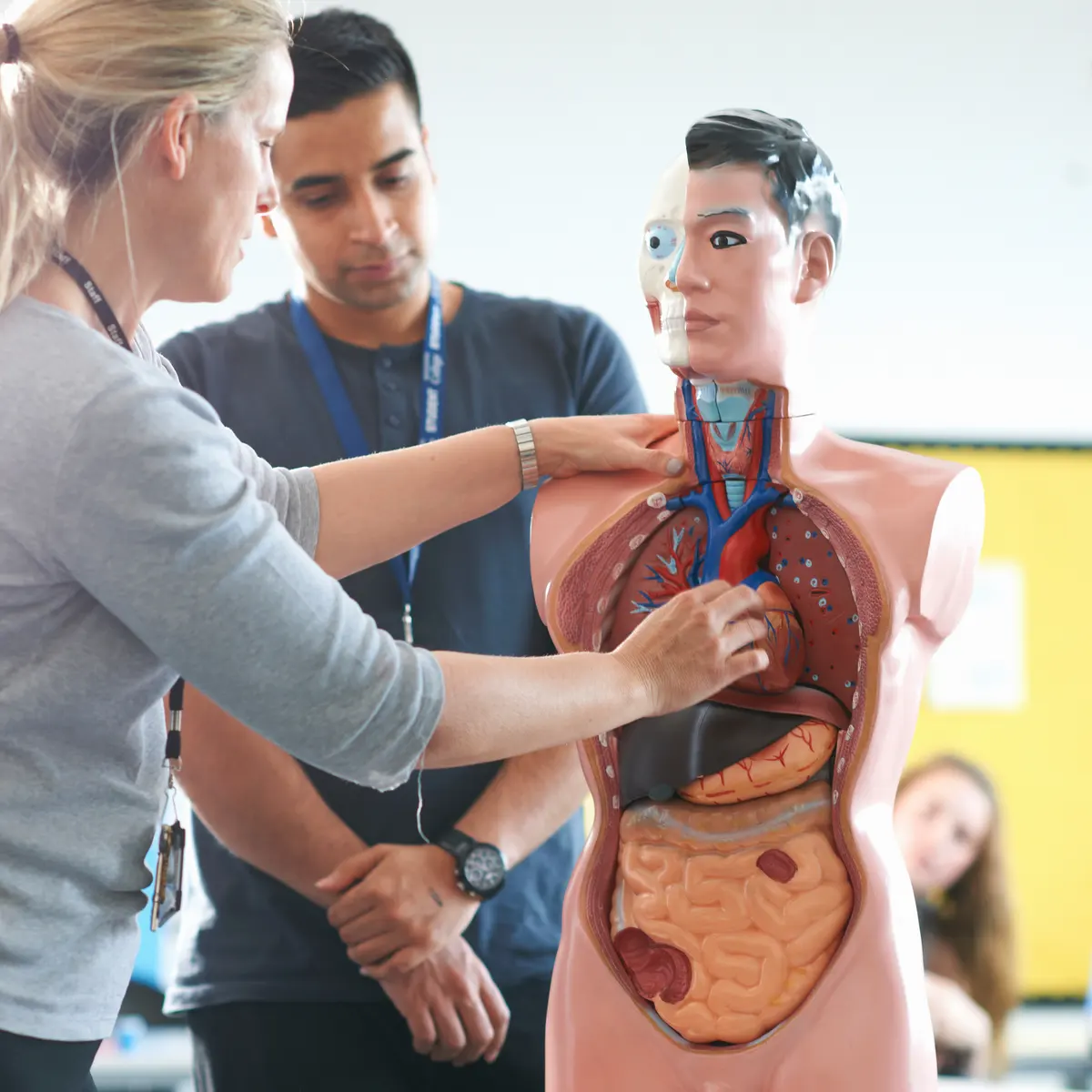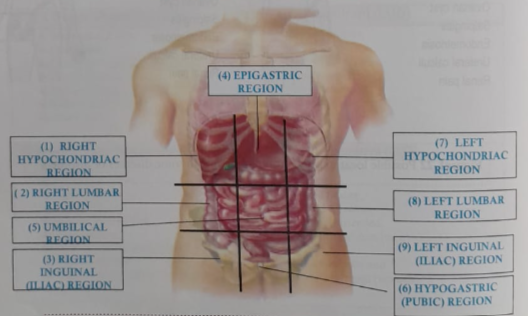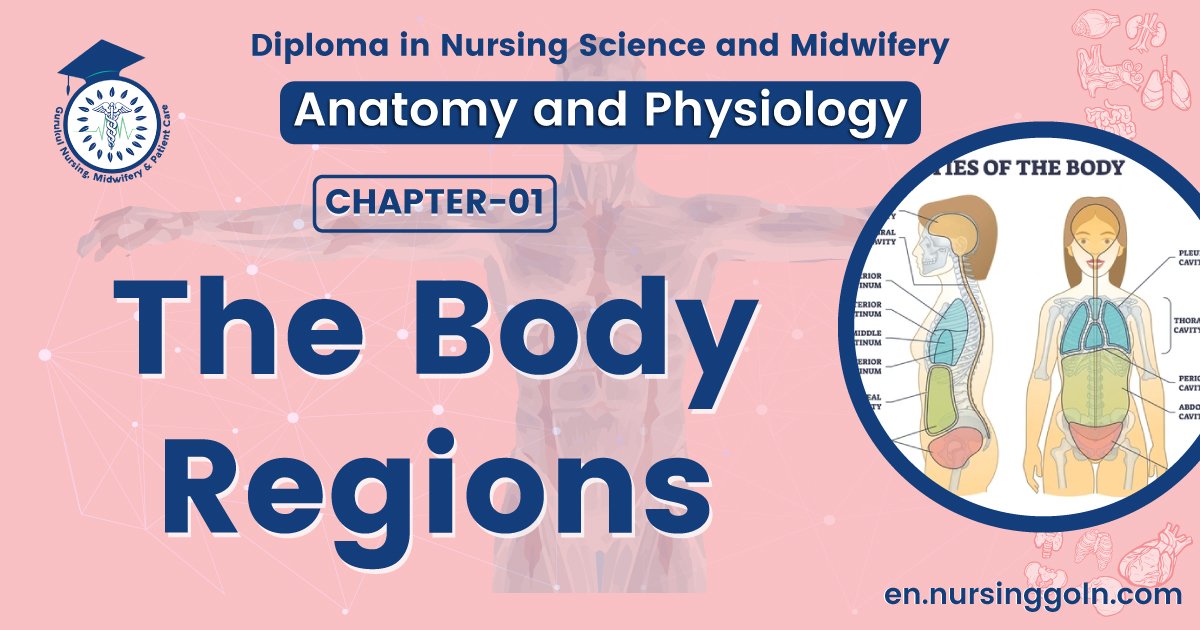The Body Regions-The course is designed for the basic understanding of anatomical structures and physiological functions of human body, musculoskeletal system, digestive system, respiratory system; cardiovascular system; urinary system, endocrine system, reproductive system, nervous system, hematologic system, sensory organs, integumentary system, and immune system. The aim of the course is to acquire knowledge and skills regarding anatomy and physiology.
The Body Regions

The principal body regions are-
Axial Region– head, neck, torso, or trunk (Thorax Abdomen)
Appendicular Region– upper and lower extremities
Abdominopelvic regions-
Clinically, the abdomen is roughly divided into nine regions by two sagittal planes from the midclavicular lines to the mid inguinal lines, and two transverse planes, one at the subcostal line and one at the iliac tubercles. The umbilicus serves at the center of the nine regions.
The nine regions of the abdomen can help determine specific ailments and are of clinical importance.
Three horizontal lines and two vertical lines create nine regions of the abdomen. Below is an image of the regions of the abdomen, which are formed within these planes. “Hypo” refers to “below”, “epi” refers to “above”, “chond” refers to the cartilage of the rib and “gast” is in reference to the stomach.

The regions are named below –
- Right Hypochondriac Region (Right Hypochondrium)
- Right Lumbar Region
- Right fliac (Inguinal) Region
- Epigastric Region (Epigastrium)
- Umbilical Region
- Hypo gastric (Pubic) Region (Hypogastrium)
- Left Hypochondriac Region(Left Hypochondrum)
- Left Lumbar Region
- Left Ihac (Inguinal) Region
There are 9 (nine) abdominopelvic regions

Read more:
